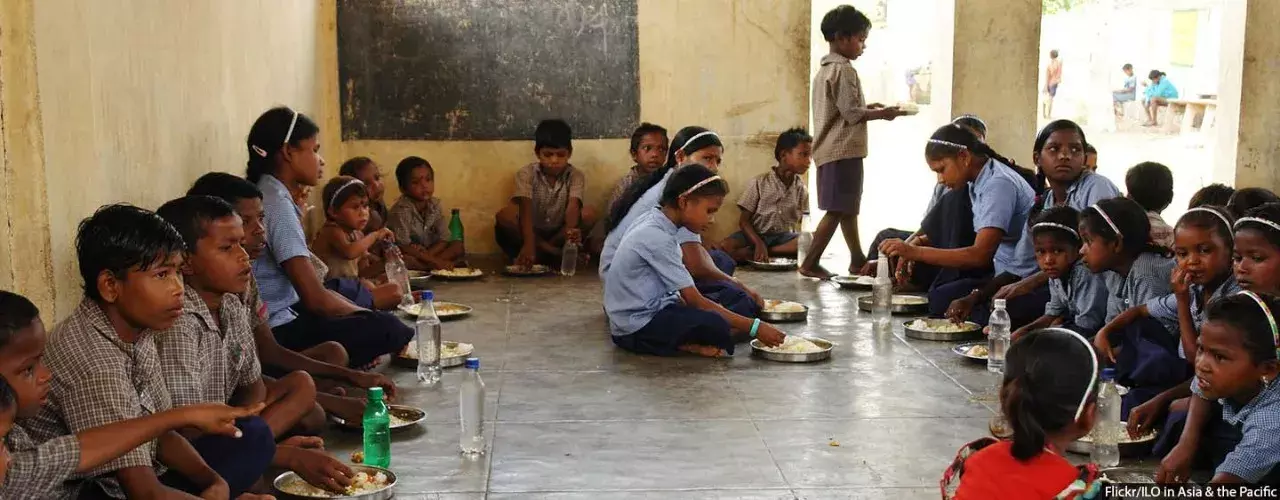Has The Status Of Child Nutrition In India Worsened? A Fact-Check
The NFHS-5 data shows a worsening trend in the child nutrition indices. Gaps in the two Rounds of data are substantial.

In a recent tweet, the CPI General Secretary, Sitaram Yechury claimed that India's children have been suffering from stunting, wasting and nutritional deficiencies as has been released by the NFHS-5, 2019-20.
The newly released National Family Health Survey data does show a worsening trend for child nutrition indices. The Fifth Round of National Family Health Survey (NFHS-5), 2019-20 was conducted across 22 States and UTs. The data collected under Phase 1 was done in 2019 from June to December. The second phase of data collection started in January 2020 which that went on till March 2020, added Prof. S.K Singh, Principal Investigator, NFHS. But due to the lockdown induced by the pandemic, data collection was halted and restarted in November, 2020. The data for the remaining 12 states and 2 union territories which includes Arunachal Pradesh, Chhattisgarh, Haryana, Jharkhand, Karnataka, Madhya Pradesh, Odisha, Punjab, Rajasthan, Tamil Nadu, Uttarakhand, Uttar Pradesh, Delhi NCT and Puducherry is anticipated to release by February or March 2021.
What Do Stunting And Wasting Mean?
The dismal state of affairs captured by the NFHS-5 data, shows a surge in the percentage of stunting, wasting and under-5 anaemia. These are some of the key factors for gauging the nutritional status of the population of a country.
Stunting is the impaired growth and development that children experience from poor nutrition, repeated infection and inadequate psychosocial stimulation. Children are considered as stunted if their height-for-age is more than two standard deviations below the WHO's Child Growth Standard median.
Wasting is defined as low weight-for-height. It usually occurs when the person has not had food for adequate quantity and quality or/and they have had been suffering from prolonged illnesses. These points further aggregate to a condition of anaemia or lower haemoglobin among children.
Retardation of growth rate is an indication of malnutrition. Measurement of weight and rate of gain in weight are the best single parameters for assessing physical growth. In India, 43% of children are underweight, 20% of children suffer from severe wasting due to under-nutrition.
How To Analyze The Data? Experts Differ
Prof. S.K Singh, Principal Investigator of NFHS, clarified, "There has been a misconception about worsening child nutrition indices in the country. The data is not being looked at correctly by people who are problematising the data. For Gujarat, the stunting percentage of 39.0% in 2019-20 and 38.5% in 2015-16 or for that matter in Maharashtra 35.2% in 2019-20 and 34.4% in 2015-16 does not have much of a difference. The children considered in this survey belong to the age of below 5 years which means 20% of the children are replicated which means there is an overlap in the data of NFHS-4 and NFHS-5 since it's a of gap of just 4 years."
Stressing on the child nutrition indices, Prof. Singh further added, "stunting is a process and is a reflection of chronic nutrition deficiency therefore, four years period is not sufficient to see substantial changes in stunting in a country. Even if there are some interventions like POSHAN Abhiyaan, the benefits of such are reflected after a time gap and it takes time for a child to be nutritionally well and stable. It takes a generation to get a difference of one or two inches or even one or two centimeters."
Purnima Menon, Senior Research Fellow, International Food Policy and Research Institute and is also a consultant of the POSHAN Abhiyaan said, "The NFHS-5 trend is definitely troubling and worrisome. We need to take a close look at the data between the period 2014-19 to understand what had exactly happened. The children taken in this category must have been born in the period from 2014-19 since it consisted of children below 5 years of age. We need to take cognisance of state by state analysis of what has happened to the social security schemes, schemes dealing with nutrition status of the population, what happened to the economy and the state of sanitation during this period."
"There has been economic slow down which has to be kept in mind in this period and very little improvement occurred in the children's diet", added Dr. Menon. The phased release of data is not an appropriate indicator of the nutritional status of children of the entire country and as a result in-depth policy analysis is needed to ascertain a better picture.
As the data shows, states like Maharashtra (25.6%), Telangana (21.7%), Assam (21.7%), Bihar (22.9%) have been suffering due to acute problems of wasting among children. The data for NFHS-4 that was conducted in 2015-16 or Round 4 shows that percentage points of wasting either shows that its lower than Round 5 which further entails that the nutritional status is far from improvement. For instance, it was 25.6%, 18.1% and 17.0%, 20.8% respectively for Maharashtra, Telangana, Assam and Bihar in Round 4 of the NFHS. Similarly, the percentage points for stunting and Under 5-anaemia too shows a worsening trend.
For states like Assam, Gujarat, Maharashtra, Manipur, percentage of Under 5-Anaemia has increased between NFHS-4 and NFHS-5. The percentage point of Under 5-anaemia in the UT of Ladakh is stark with 91.4% and 92.5% in NFHS 2015-16 and NFHS 2019-20.
The figures for Himachal Pradesh (30.8%), Kerala (23.4%), Tripura (32.3%) and Lakshadweep (32.0%) show a degrading trend as far as stunting is concerned. The Infant Mortality Rate (IMR) for north eastern states like Manipur (25.0%), Meghalaya (32.3%) and Tripura (37.6%) are still higher for NFHS 2019-20. The IMR for Bihar has improved from 48.1% to 46.8% but is higher than the rest of he 22 states and UTs considered in this survey.


